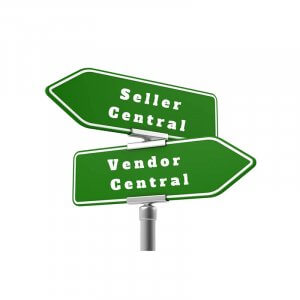A while back, Amazon released the Vendor Central interface, which aims meant to encourage manufacturers and suppliers to start using the platform more efficiently. Unlike the Seller Central interface, which is available to everyone who wants to sell on Amazon, Vendor Central works on an invite-only basis. So you can’t sign up for it unless Amazon specifically invites you to join the program and start using the Vendor Central interface.
So, what is the difference between the two web-based interfaces? Keep reading to learn more.
As we’ve already mentioned, Vendor Central is a viable option for you only if Amazon invites you to join in. What actually happens is that Amazon buys the products from you, sells them on the venue and decides on a selling price, and then you get paid back the amount you’ve negotiated with them upon selling them the items.
Amazon Vendor Central vs. Amazon Seller Central
Price
This is one of the key distinctions between the two interfaces: while on Seller Central you are at liberty to sell the products you manufacture at any price you see fit, Vendor Central doesn’t really allow you this option. However, remember! While you do not have full control over your prices, as Amazon might go above the MAP, you do get the chance to sell more than you might have on your own, since Amazon buys products in bulk, rather than individually.
Disbursements
Another distinction between these two interfaces is reflected in the way in which sellers get paid for their products. While Seller Central guarantees really fast payment, on Vendor Central you’ll get your money after 60 or even 90 days, which might definitely put some sellers off, especially if they have cash flow concerns.
Inventory Management
Also, you can’t really control your inventory and the shipment of said inventory. Amazon might decide that they have sold enough, and you could end up being sent back some of the products they bought from you, which is not something Seller Central users come across.
Moreover, if you’re using Vendor Central, if you’re using Vendor Central and Amazon is interested in your products, they might ask you to add it to the Amazon catalog.
Control over Content
One advantage Vendor Central has over Seller Central is the fact that the former allows A+ content. This means that you’ll be able to promote your products more successfully, by increasing customer conversion, retaining customer interest, and also raising brand awareness. You can either build your A+ details page yourself, or have Amazon do that for you.
Amazon Vine
One more cool feature is Vendor Central’s Amazon Vine program, through which Amazon provides customer reviews for new or pre-released products. This way, you could have some of Amazon’s top reviewers post a review about your product, making it more visible for your buyers.
Keep in mind, however, that even though Amazon contacts you and buys your products, you still need to make sure that they meet all of Amazon’s requirements!
Note that bulk selling doesn’t sound tempting for those who still want to grow their business, or for those who don’t do selling just as a secondary activity and get the fat profits from some other sector of the business.
Irina is part of the Business Development Team at SellerEngine Software. She’s an expert in bringing back to life Amazon Selling Accounts. Her motto is: everything will be alright in the end, and if it’s not alright, then it’s not the end.
